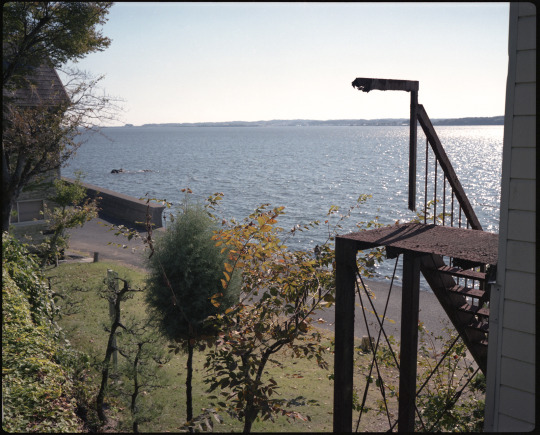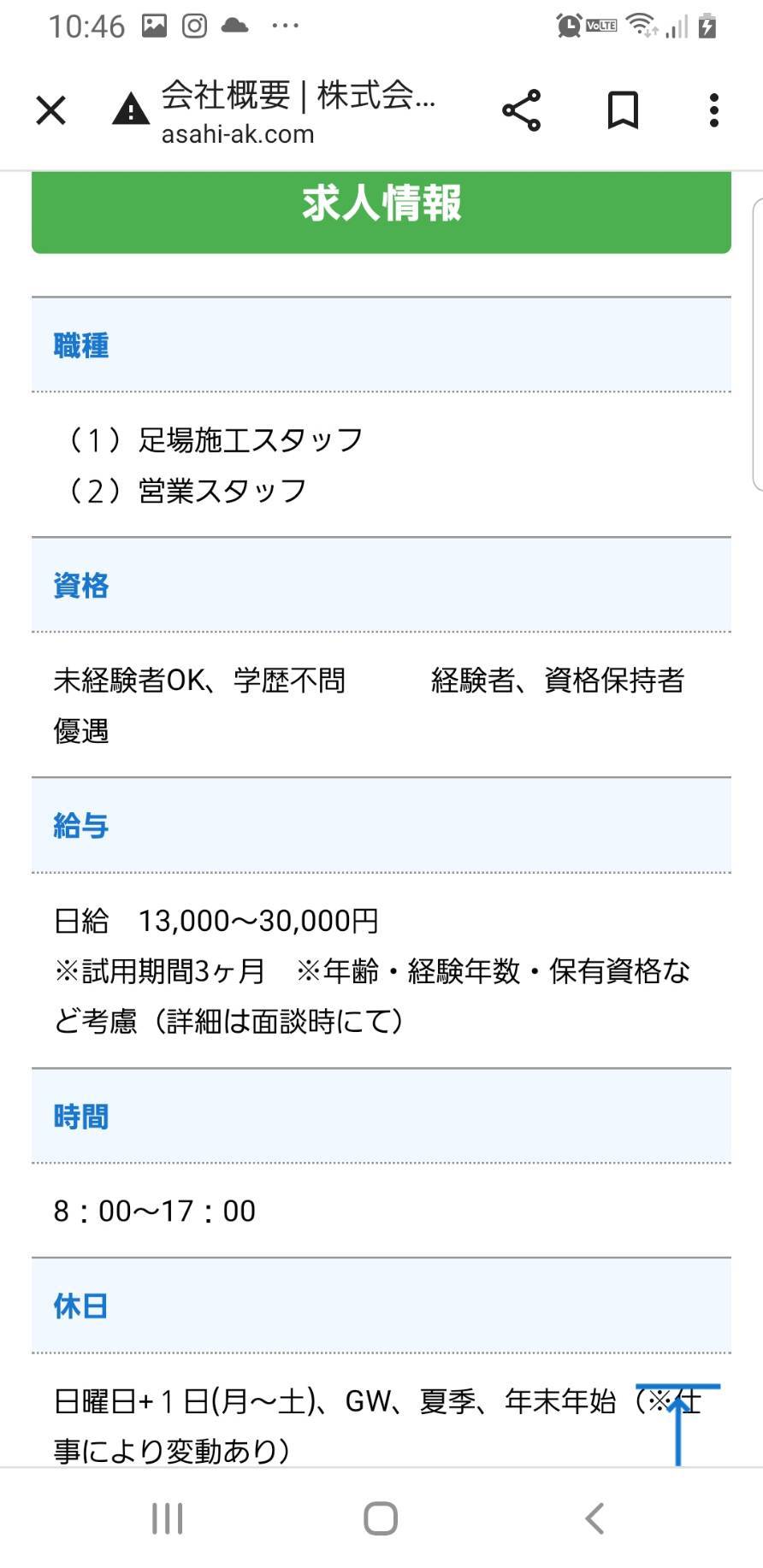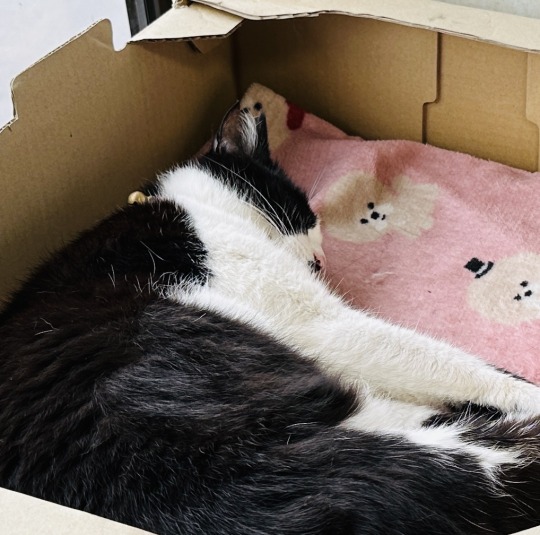#静岡県静岡市
Text
入船鮨 - 2023.05.27
先日2023年5月27日(土)のこと。
前日より静岡県浜松市に来ていて、この日のうちに長野県松本市へと戻らなくてはいけなかったのですが、ただ帰るだけではもったいないと、いくつか寄り道をしてみました。
最後の寄り道は、静岡県は静岡市清水区の『エスパルスドリームプラザ』内にある『入船鮨』エスパルスドリームプラザ店へ。
何度も『エスパルスドリームプラザ』には入ったことがあるのですが、基本的に目的が飲食ではなかったこともあって、また飲食目的でも店が偏っていたこともあって、この店には初の訪問。 さすがに高値のメニューが並ぶ中、選んだのは『静岡にぎり』です。 静岡県沖で採れた魚貝を使い、県内産のわさびでいただく。 お茶には富士山の伏流水を用いて、“静岡”にこだわった内容です。
う~ん、雲丹はイマイチでしたが、他は鮮度も程良く、とてもおいしかったです。 長野県のように周囲を山々に囲まれた内陸地域では難…
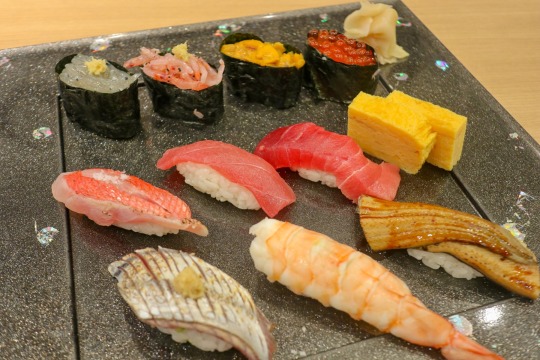
View On WordPress
0 notes
Text

A painted example of the Fuji Mandara (富士曼荼羅), a mandala depicting the sacred landscape of Mount Fuji populated with earnest pilgrims making their way to the peaks above inhabited by three manifesting Buddhist deities
Color on silk dating to the Muromachi period (1336-1573) from the collection of Fujisan Hongū Sengen Taisha Grand Shrine (富士山本宮浅間大社) in Fujinomiya, Shizuoka Prefecture
Image from "Shintō: The Sacred Art of Ancient Japan" edited by Victor Harris, published by the British Museum Press. 2001, page 181
#japanese art#buddhist art#曼荼羅#mandala#静岡県#shizuoka prefecture#富士宮市#fujinomiya#富士山#fujisan#mount fuji#富士山本宮浅間大社#fujisan hongu sengen taisha#富士曼荼羅#fuji mandara#crazyfoxarchives#arte japonés#arte budista#monte fuji
172 notes
·
View notes
Text
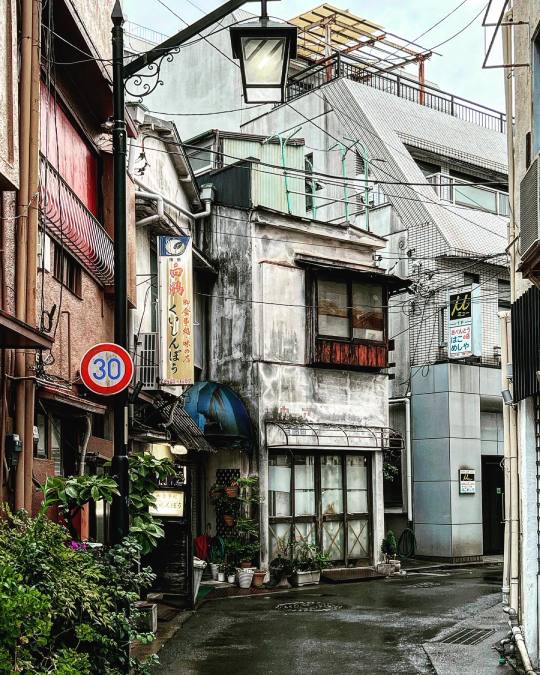
link
#doco_go#@doco_go#静岡県熱海市#糸川遊郭#糸川赤線#糸川特飲街#はこめしや#千ちゃん#スナックベルデ#昭和レトロ#ノスタルジック#路地裏同盟#食事処くいしんぼう#architecture#design#store front#signage#Atami#Shizuoka#side streets#city streets#alleyways#back alley
121 notes
·
View notes
Text
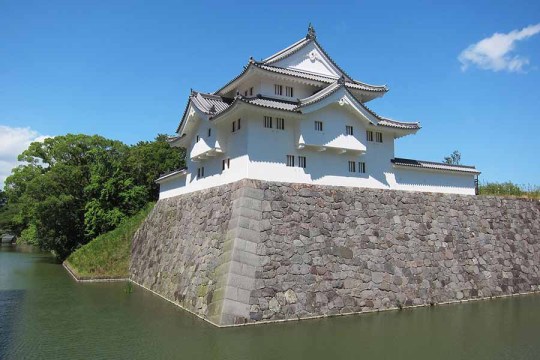
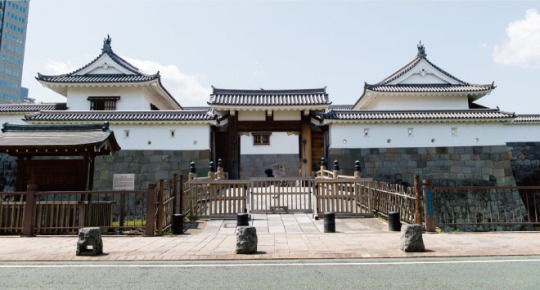
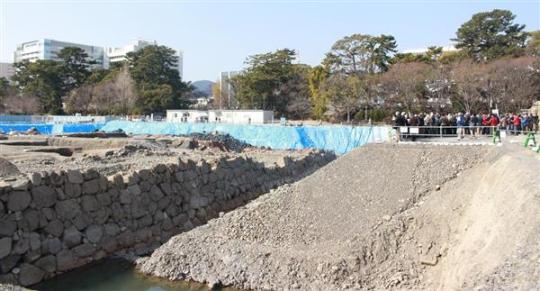
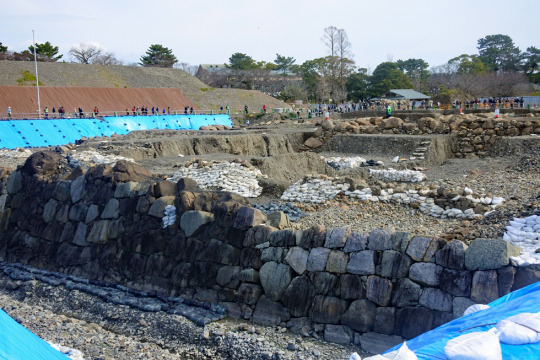
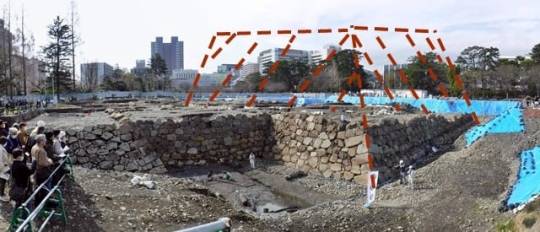
Sean bienvenidos japonistasarqueológicos, a una nueva entrega de arqueología nipona en esta ocasión os hablaré del castillo de Sunpu que se encuentra en la ciudad de Shizuoka, en la Prefectura de Shizuoka.
-
El castillo de Sunpu, fue en el lugar en donde vivó, Ieyasu Tokugawa en los siglos XVI-XVII, donde pasó sus últimos años de vida, las ruinas de las torres del castillo que se construyeron con diferentes métodos de construcción durante el período Sengoku y el período Edo.
-
Sunpu Castle Park es uno de los lugares turísticos representativos de la ciudad de Shizuoka es un parque que utiliza las ruinas del castillo, macizo de flores Aoi lleva el logo de la familia de Tokugawa como proyecto conmemorativo del 400 aniversario de Ieyasu Tokugawa. El área está bajo excavación, se encuentra en la zona noroeste y se está realizando actualmente la excavación de la torre del castillo.
-
Hay una parte del castillo que está muy reconstruida y que se puede visitar con un módico precio, dado que el segundo piso y los superiores no se pueden abrir al público debido a la ley de construcción, el piso se quita para que la estructura se pueda ver desde abajo.
-
La Puerta Este/Tatsumi Yagura, está rodeada por un foso y está cerca de la estación Shin-Shizuoka. La torreta Tatsumi Higashigomon y Tatsumi Yagura están conectadas,el Tatsumi Yagura fue restaurado en 1989 y la puerta este se restauró en 1996. La entrada al jardín Momijiyama está cerca de la puerta norte del parque del castillo de Sumpu. Hay un gran estanque en el centro, y está dividido en 9 áreas que se asemejan al paisaje de Shizuoka con flores de temporada. Hay una estatua de Yaji-san y Kita-san fue construida para conmemorar el 200 aniversario.
-
En 1585, Tokugawa Ieyasu comenzó la construcción del castillo y en 1588 se completó la torre del castillo Sunpu.Incluso después de que Ieyasu empezará el shogunato de Edo en 1603 y se mudó a Edo, la familia Tokugawa continuó preparándolo.Se dice que es el lugar donde Ieyasu regresó al castillo de Sumpu en 1607, se retiró y murió en 1616 a la edad de 75 años.
-
Espero que os haya gustado y nos vemos en próximas publicaciones, pasen una buena semana.
Welcome, Japanese archaeologists, to a new instalment of Japanese archaeology. This time I will be talking about Sunpu Castle, located in the city of Shizuoka, Shizuoka Prefecture.
-
Sunpu Castle was the place where Ieyasu Tokugawa lived in the 16th-17th centuries, where he spent the last years of his life. The ruins of the castle towers were built with different construction methods during the Sengoku and Edo periods.
-
Sunpu Castle Park is one of the representative tourist sites of Shizuoka City is a park that uses the ruins of the castle, Aoi flowerbed bears the logo of the Tokugawa family as a project commemorating the 400th anniversary of Ieyasu Tokugawa. The area is under excavation, it is located in the northwest area and the excavation of the castle tower is currently underway.
-
There is a part of the castle that is heavily reconstructed and can be visited for a small fee, as the first floor and above cannot be opened to the public due to construction law, the floor is removed so that the structure can be seen from below.
-
The East Gate/Tatsumi Yagura, is surrounded by a moat and is close to Shin-Shizuoka Station. The Tatsumi Higashigomon turret and Tatsumi Yagura are connected, the Tatsumi Yagura was restored in 1989 and the east gate was restored in 1996. The entrance to Momijiyama Garden is near the north gate of Sumpu Castle Park. There is a large pond in the centre, and it is divided into 9 areas that resemble the Shizuoka landscape with seasonal flowers. There is a statue of Yaji-san and Kita-san was built to commemorate the 200th anniversary.
-
In 1585, Tokugawa Ieyasu started the construction of the castle and in 1588 the Sunpu castle tower was completed. Even after Ieyasu started the Edo shogunate in 1603 and moved to Edo, the Tokugawa family continued to prepare it. It is said to be the place where Ieyasu returned to Sumpu castle in 1607, retired and died in 1616 at the age of 75.
-
I hope you liked it and see you in future posts, have a nice week.
日本の考古学者の皆さん、新しい日本考古学へようこそ。今回は、静岡県静岡市にある駿府城についてお話します。 - 駿府城は、16 世紀から 17 世紀にかけて徳川家康が晩年を過ごした場所です。天守閣跡は、戦国時代から江戸時代にかけてさまざまな工法で築かれました。
-
静岡市を代表する観光地の一つである駿府城公園は、徳川家康公400年記念事業として城跡を利用した公園で、葵花壇には徳川家のマークが刻まれています。発掘調査中のエリアで、北西部に位置し、現在天守閣の発掘調査が行われています。
-
城の一部は大規模に復元されており、1階以上は建築法の関係で一般公開できないため、床を撤去して下から構造を見学できるようになっており、低料金で見学できる。 。
-
新静岡駅からもほど近い、お堀に囲まれた東門・巽櫓。巽東御門櫓と巽櫓はつながっており、巽櫓は1989年、東門は1996年に復元されました。紅葉山庭園の入り口は駿府城公園の北門近くにあります。中央に大きな池があり、季節の花々が彩る静岡の風景をイメージした9つのエリアに分かれています。弥次さんと喜多さんの像があり、200年を記念して建てられました。
-
1585年に徳川家康が築城を開始し、1588年に駿府城天守閣が完成しました。 1603年に家康が江戸幕府を開き、江戸に移った後も、徳川家では仕込み続けられました。 1607年に家康が駿府城に戻り、隠居し、1616年に75歳で亡くなった場所といわれています。
-
気に入っていただければ幸いです。今後の投稿でお会いしましょう。良い一週間をお過ごしください。
#日本#歴史#ユネスコ#城#考古学#遺跡#徳川家康#戦国時代#駿府城#静岡市#���の花#辰野櫓#紅葉山庭園#大名#静岡県#地理#人類遺産#japan#history#unesco#castle#archaeology#archaeologicalrests#TokugawaIeyasu#Sengokuperiod#SunpuCastle#ShizuokaCity#AoiFlowers#TatsuYagura#MomijiyamaGarden
27 notes
·
View notes
Text
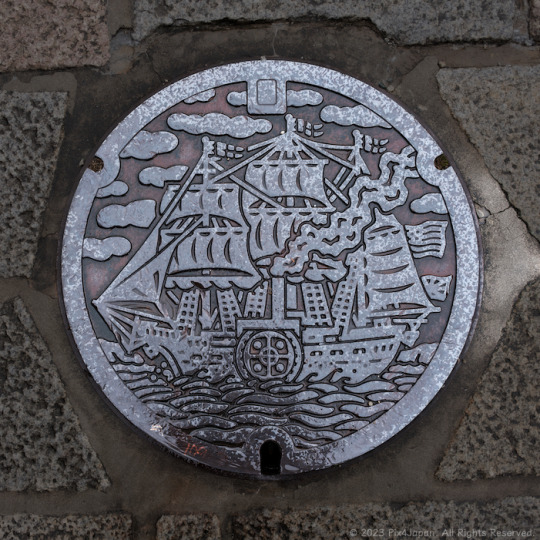
Manhole Cover of City of Shimoda
Location: Perry Road, Shimoda, Shizuoka Prefecture, Japan
Timestamp: 15:23 June 6, 2023
One of the sites where US Naval Commodore Perry initially landed in Japan, demanding an end to Japan's extensive period of isolation spanning over 200 years, and advocating for trade with the Western world through the use of gunboat diplomacy, has been immortalized in the history books. The city of Shimoda is the location where the Treaty of Peace and Amity was signed in 1854 between the US Government and the Japanese Tokugawa shogunate.
Within this city, there exists many unique manhole covers that pay homage to the iconic "Black Ships." These legendary vessels earned their name from the Japanese people themselves, owing to their distinctive black hulls and the billowing black smoke emitted by their coal-fired steam engines.
Checkout the Pix4Japan blog for historical references, further details, and geotagged locations (link in Bio).
Fujifilm X100V (23 mm) with 5% diffusion filter
ISO 160 for 1/280 sec. at ƒ/2.2
Classic Chrome film simulation
#black ship#manhole cover#Shimoda#Shizuoka Prefecture#Japan#street photography#Fujifilm#X100V#pix4japan#マンホール#黒船#下田市#静岡県#ストリートスナップ
127 notes
·
View notes
Text

先日三島で出会ったコサギちゃん。
94 notes
·
View notes
Text

Camp!!
10 notes
·
View notes
Text
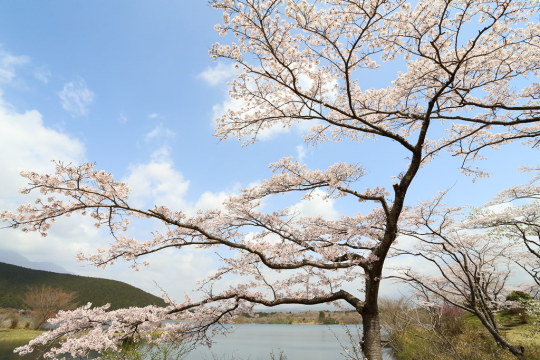
#Spring lakeside#sakura#cherry#tree#spring#nature#landscape#japan#laketanukiko#fujinomiya#lakeside#april#shizuoka#田貫湖#静岡県#富士宮市#日本#桜#サクラ#自然#樹木#春#花#flower#風景
102 notes
·
View notes
Text

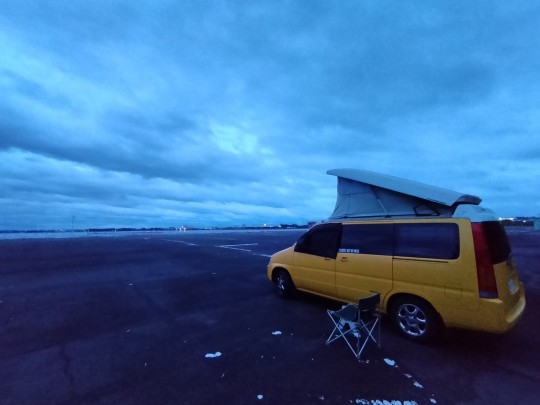
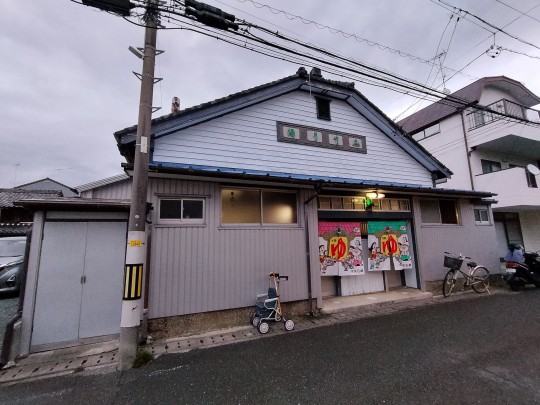
浜名湖で車中泊。
してたら追い出された日。
みどり湯良かったです。
20230622
7 notes
·
View notes
Text

#nail art#ネイル#nail#ダズル#dazzle#三島市#ネイルサロン#ジェルネイル#三島市ネイルサロン#三島市ネイルスクール#三島ネイル#opi#三島市ネイル#ネイルアート#三島ネイルスクール#dazzle nail#ジェル#静岡県#ネイルスクール
30 notes
·
View notes
Text




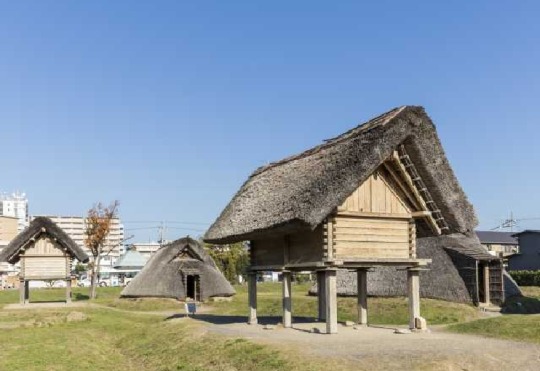

日本の考古学者を迎えての新しい合成回です。今回は登呂遺跡についてお話します。どうぞごゆっくりとお過ごしください。それでは、始めましょう。
-
中部地方静岡市にある登呂遺跡は、水害の被害を受けながらも、弥生時代に築かれ、1世紀から5世紀の弥生時代後期から古墳時代まで続く遺跡です。
-
遺跡が発見されたのは、昭和に当たる1943年の2ww中頃。
戦闘機のプロペラを作るための弾薬工場が建設されていたのですが、偶然にも地中から粘土や木製のものが見つかり、それ以来1999年代まで発掘調査が行われていました。 もっと話を聞きたいですか? コメントで教えてください。
-
お気に召していただけたなら幸いです。良い一週間をお過ごしください。また、日出ずる国から今後の記事でお会いしましょう。
-
Sean bienvenidos japonistasarqueológicos a una nueva entrega sintética de arqueología japonesa, en la cual hablaremos de Ruinas de Toro, una vez dicho esto pónganse cómodos que empezamos.
-
Ruinas de Toro, se localiza en la ciudad de Shizuoka, en la región de Chūbu, se construyó en el periodo Yayoi y continuaron desde finales del período dicho periodo hasta el período Kofun siglos I al siglo V, a pesar de que fueron dañadas por las inundaciones.
-
Las ruinas fueron descubiertas en plena 2ww en 1943 lo que corresponde a la era showa,
Se estaba construyendo, una fábrica de municiones para fabricar hélices para aviones de combate y accidentalmente encontramos objetos de barro y madera en el suelo, desde entonces se excavó hasta los años 1999. ¿Os gustaría que os contará más? déjenmelo saber en los comentarios.
-
Espero que os haya gustado os deseo una buena semana y nos vemos en próximas publicaciones del país del sol naciente.
-
Welcome Japanese archaeologists to a new synthetic installment of Japanese archaeology, in which we will talk about the Toro Ruins, so make yourselves comfortable and let's get started.
-
Toro Ruins, located in the city of Shizuoka, in the Chūbu region, was built in the Yayoi period and continued from the late Yayoi period to the Kofun period from the 1st to the 5th century, although it was damaged by floods.
-
The ruins were discovered in the middle of the 2ww in 1943 which corresponds to the showa era,
An ammunition factory was being built to make propellers for fighter planes and we accidentally found clay and wooden objects in the ground, since then it was excavated until the 1999's. Would you like me to tell you more? Let me know in the comments.
-
I hope you liked it, I wish you a good week and see you in future posts from the land of the rising sun.
-
More information: https://www.shizuoka-toromuseum.jp/zhcn/
#japan#shizuokacity#shizuokaprefecture#ToroRuins#showaperiod#chūburegion#archaeology#unesco#yayoiperiod#prehistory#kofunperiod#日本#静岡市#静岡県#登呂遺跡#昭和時代#中部地方#考古学#ユネスコ#弥生時代#先史時代#古墳時代
34 notes
·
View notes
Text
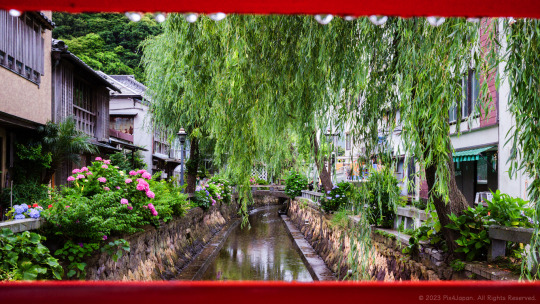
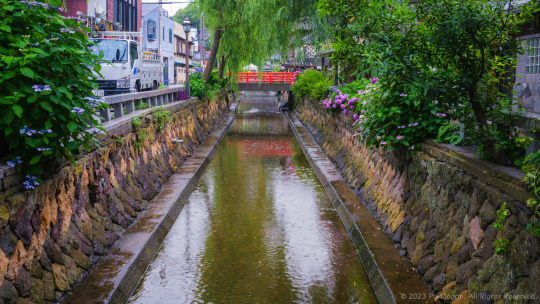
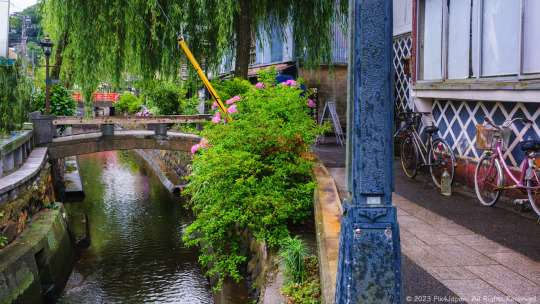
Historical Perry Road along Serene Canal & Yanagibashi Bridge
Location: Perry Road, Shimoda, Shizuoka Prefecture, Japan
Timestamp: 15:34 June 6, 2023
The canal running alongside Perry Road in the port town of Shimoda, Shizuoka Prefecture, Japan, is adorned with vibrant hydrangeas and weeping willows. Fortunately, this peaceful canal still retains its original stonework, preserving its charm instead of being completely replaced with tasteless concrete.
I am captivated by the lush greenery, unique streetlamps, and the array of shops, cafes, restaurants, and antique stores that line Perry Road.
"Perry Road" is now a street that holds great historical significance as it was the path traveled by Commodore Matthew C. Perry of the U.S. Navy. Perry embarked on this very route upon his arrival in Japan aboard the renowned "Black Ships" during the final years of the Edo Period (1603-1868). His destination was Ryosenji Temple, where negotiations took place between Perry and Japanese officials, ultimately leading to the signing of the Japan-US treaty.
Walking along Perry Road not only offers a captivating natural spectacle but also provides a glimpse into the rich historical tapestry of Shimoda. As you stroll amidst the blooming hydrangeas and elegant weeping willows, take a moment to reflect on the transformative events that unfolded along this very path. It serves as a testament to the enduring connections between nations and the profound impact that a single route can have in shaping history.
Checkout the Pix4Japan blog for historical references, further details, and geotagged locations (link in Bio).
Fujifilm X100V (23 mm) with 5% diffusion filter
ISO 3200 for 1/125 sec. at ƒ/11
Provia/Standard film simulation
Fujifilm X100V (23 mm) with 5% diffusion filter
ISO 3200 for 1/120 sec. at ƒ/11
Provia/Standard film simulation
Fujifilm X100V (23 mm) with 5% diffusion filter
ISO 3200 for 1/120 sec. at ƒ/11
Provia/Standard film simulation
#Perry Road#Shimoda#Shizuoka Prefecture#Japan#street photography#Fujifilm#X100V#pix4japan#ペリーロード#下田市#静岡県#ストリートスナップ
31 notes
·
View notes
